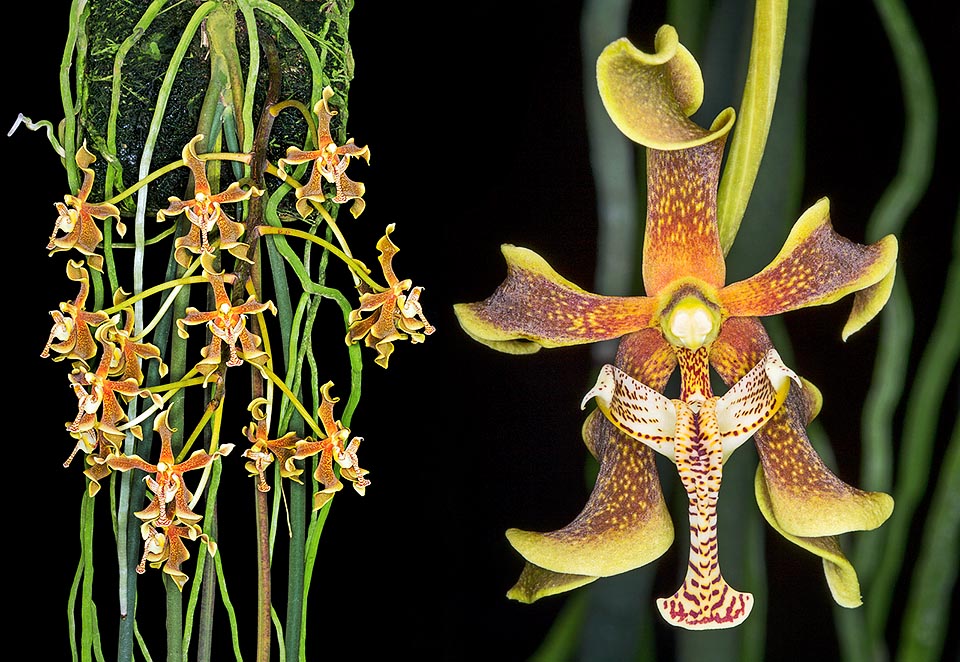Family : Orchidaceae

Text © Pietro Puccio

English translation by Mario Beltramini
The species is native to northern Borneo (Sabah) where it lives in the humid forests, often on the trees of Gymnostoma sumatranum (Jungh. ex de Vriese) L.A.S.Johnson, on slopes of ultrabasic rocks between 500 and 900 m of altitude. The name of the genus is formed by the Greek prefix “παρά” (parà) =“similar to” and Phalaenopsis; the specific name is the Latin adjective “labukensis” = of Labuk, with reference to the place of origin of the type species.
Common names: rat-tailed phalaenopsis (English).
The Paraphalaenopsis labukensis Shim, A.L.Lamb & C.L.Chan (1981) is a drooping monopodial epiphytic species with short stems, robust roots and 3-5 cylindrical grooved leaves, fleshy, that in nature may reach a length of about 3 m with a diameter of 6-8 mm. Axillar inflorescences 6-8 cm long bearing 5-15 flowers of 5-6,5 cm of diameter, perfumed, with wavy sepals and petals of golden brown colour with yellow margin and trilobed labellum with median lobe long and quite thin.
Species with showy blooming, rare in nature, due to the destruction of its habitat, and in cultivation, requires a slightly shaded exposition, medium-high temperatures in summer, 24-30 °C, slightly cooler in winter, with night lowest not under the 16 °C, high humidity, 70-85%, and constant ventilation.

Rare in nature, Paraphalaenopsis labukensis is a drooping epiphyte of Borneo humid forests. Cylindrical leaves even 3 m long and 5-6 cm perfumed flowers © G. Mazza
The species is reported in the appendix II of CITES (species whose trade is internationally ruled).
Synonyms: Phalaenopsis labukensis (Shim, A.L.Lamb & C.L.Chan) Shim (1982).
→ For general notions about ORCHIDACEAE please click here.
